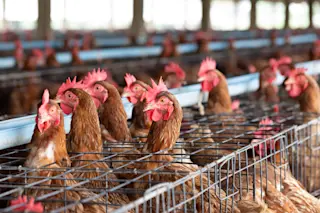Gallus gallus, the undomesticated ancestor of modern chickens
Chickens, the surviving descendants of once-mighty therapod dinosaurs
, have come to dominate American dinner tables, where its meat is consumed at a rate of 80 pounds per person per year. How the wild grub-eating Gallus Gallus was tamed and commodified into frozen breaded cutlets is actually quite an epic story, one that involves (possibly) saving Greek civilization from Persians, the rise and fall of the Roman Empire, and continues today with KFC's remarkable invasion of China. Jerry Adler and Andrew Lawler have written a cover story
for Smithsonian magazine on the taming of the chicken that delivers these tidbits and gives plenty more food for thought. It was the Egyptians, for example, who first figured out how to artificially incubate eggs, so they could be hatched without the presence of hens---a method so important that their methods were kept secret for ...













